Calculus Of One Real Variable –
By Pheng Kim Ving
|
|
2.4 |
Return To Contents
Go To Problems & Solutions
|
1. Differentiability Implies Continuity |
We'll show that if a function
is differentiable, then it's continuous.
Theorem 1.1
|
If a function f is differentiable at a point x = a, then f is continuous at x = a. |
Proof

EOP
Note that if we let h = x
– a then:
![]()
The right-hand side of the
above equation looks more familiar: it's used in the definition of the
derivative.
Go
To Problems & Solutions Return To Top Of Page
|
2. Continuity Doesn't Imply
Differentiability |
We'll show by an example
that if f is continuous at x = a, then f
may or may not be differentiable at x = a. The converse
to the above theorem isn't true. Continuity doesn't imply differentiability.
Example 2.1

Solution
a.
|
|
Fig. 2.1
|

and thus f '(0)
don't exist. It follows that f
is not differentiable at x
= 0.
Remark 2.1
In handling continuity and
differentiability of f,
we treat the point x = 0
separately from all other points because
f changes
its formula at that point. We do so because continuity and differentiability
involve limits, and when f changes its formula at
a point, we must investigate the one-sided limits at both sides of the point to
draw the conclusion about the limit at that
point.
Go
To Problems & Solutions Return To Top Of Page
|
3. Where Functions Aren't
Differentiable |

|
|
Fig. 3.1 f
isn't differentiable at a
where it's discontinuous, at b
where its |
Problems & Solutions
|
1. Let y = f(x) = x1/3.
a. Sketch a graph of f using graphing technology.
b. Based on the graph, where is f both continuous and differentiable?
c. Based on the graph, where is f continuous but not differentiable?
Solution
a.
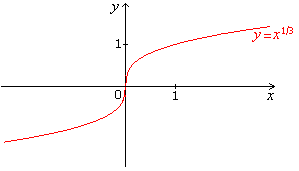
b. Based on the graph, f is both
continuous and differentiable everywhere except at x = 0.
c. Based on the graph, f is continuous
but not differentiable at x = 0.
![]()
2. Let f be defined by f(x) =
|x2 + 2x – 3|.
a. Show
that f is
continuous everywhere.
b. Show, using the definition of derivative, that f is differentiable
everywhere except at x =
– 3 and x = 1.
Solution
a. We have f(x) =
|(x + 3)(x – 1)|.
The following table shows the signs of (x + 3)(x – 1).

So we have:
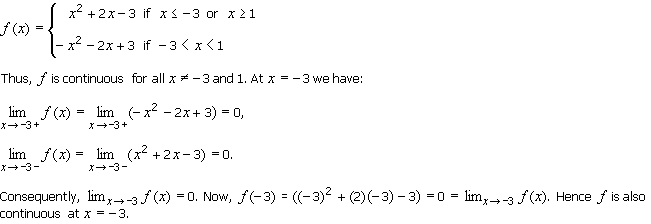
Similarly, f is also continuous at x = 1. It follows that f
is continuous everywhere.
|
b. |
|
Case Where x < – 3 Or x
> 1. We have:
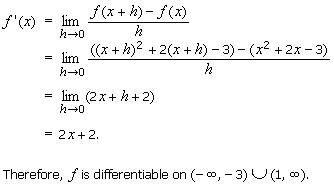
Case Where – 3 < x < 1. We have:
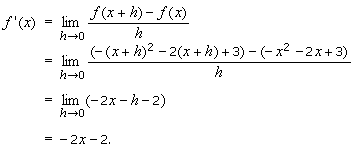
So f is differentiable on (– 3, 1).
Case Where x =
– 3. We have:

and thus f '(– 3) don't exist. As a consequence, f isn't
differentiable at x = – 3.
Case Where x = 1. Similarly, f isn't
differentiable at x = 1.
In summary, f is differentiable everywhere except at x = – 3 and x = 1.
![]()
![]()
Solution


Note
Many other examples are
possible, as seen in the figure below.

![]()
![]()
Solution

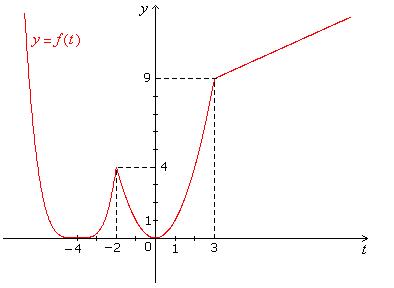
![]()
5. If possible, give an example of a
differentiable function that isn't continuous.
Solution
That's impossible, because
if a function is differentiable, then it must be continuous.
Return To Top Of
Page
Return To Contents



